The Classic
The Classic grip for holding a watercolor brush is much like the way you hold a pen or pencil for writing. The only difference being that you (for the most part) are gripping the brush further from the business end of things. Pick up your brush and grip the thickest part of the handle above the ferrulle—the body of the brush—and hold it like you are getting ready to write a letter. Remember writing? Weigh the brush in your hand, roll it with your fingers, find the balance of the brush in your grip. 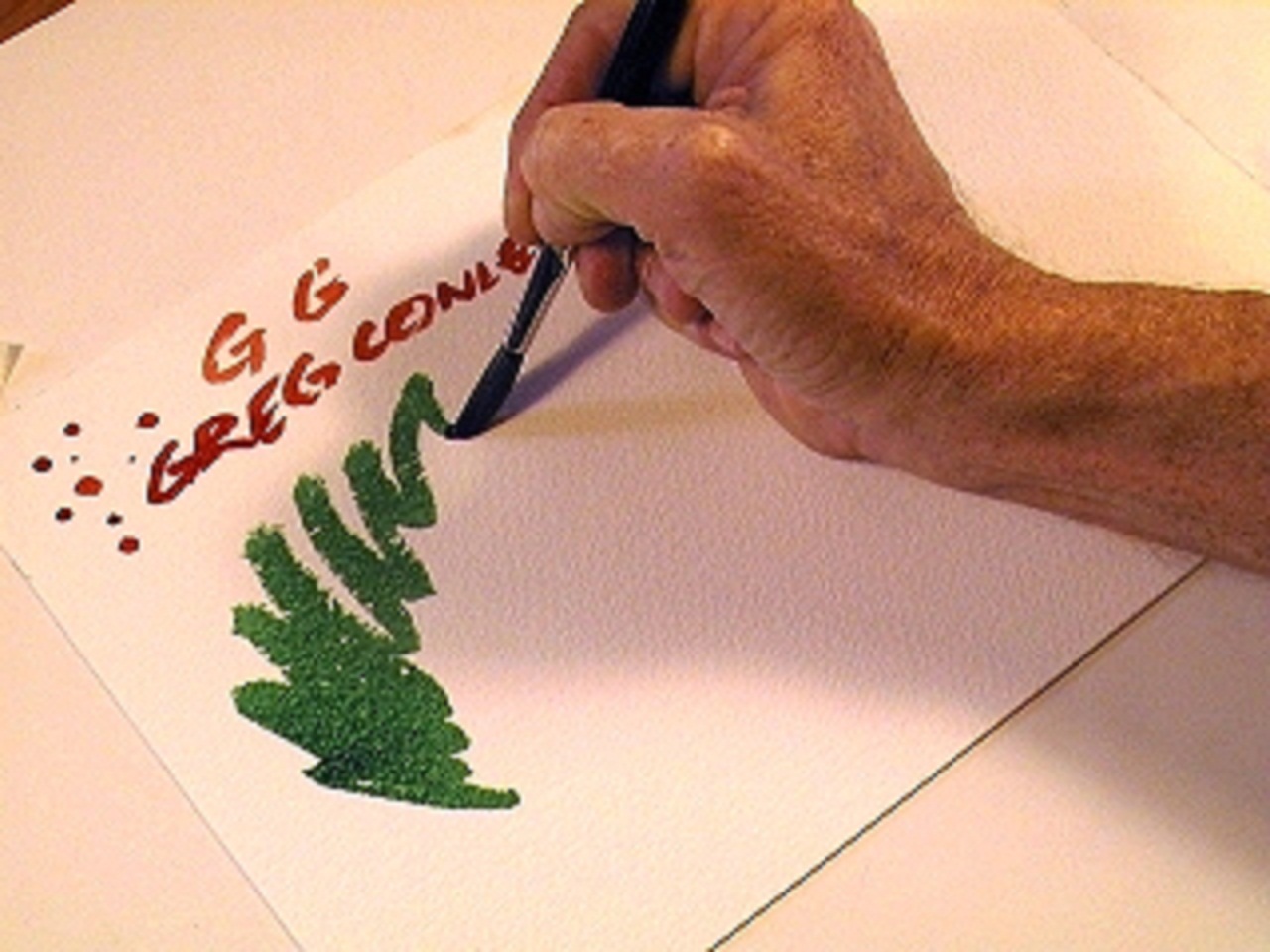 Since you are holding your brush as a writing instrument go ahead and use it for that. Practice signing your name in a way that you can use to sign your paintings. It may take a bit of practice to find one that suits you so take your time. The Classic grip gives you linear control, making it ideal for flowing lines and drawing with paint. Mix up some colors, start doodling and see how the brush works as you push and pull it on your paper.
Since you are holding your brush as a writing instrument go ahead and use it for that. Practice signing your name in a way that you can use to sign your paintings. It may take a bit of practice to find one that suits you so take your time. The Classic grip gives you linear control, making it ideal for flowing lines and drawing with paint. Mix up some colors, start doodling and see how the brush works as you push and pull it on your paper. 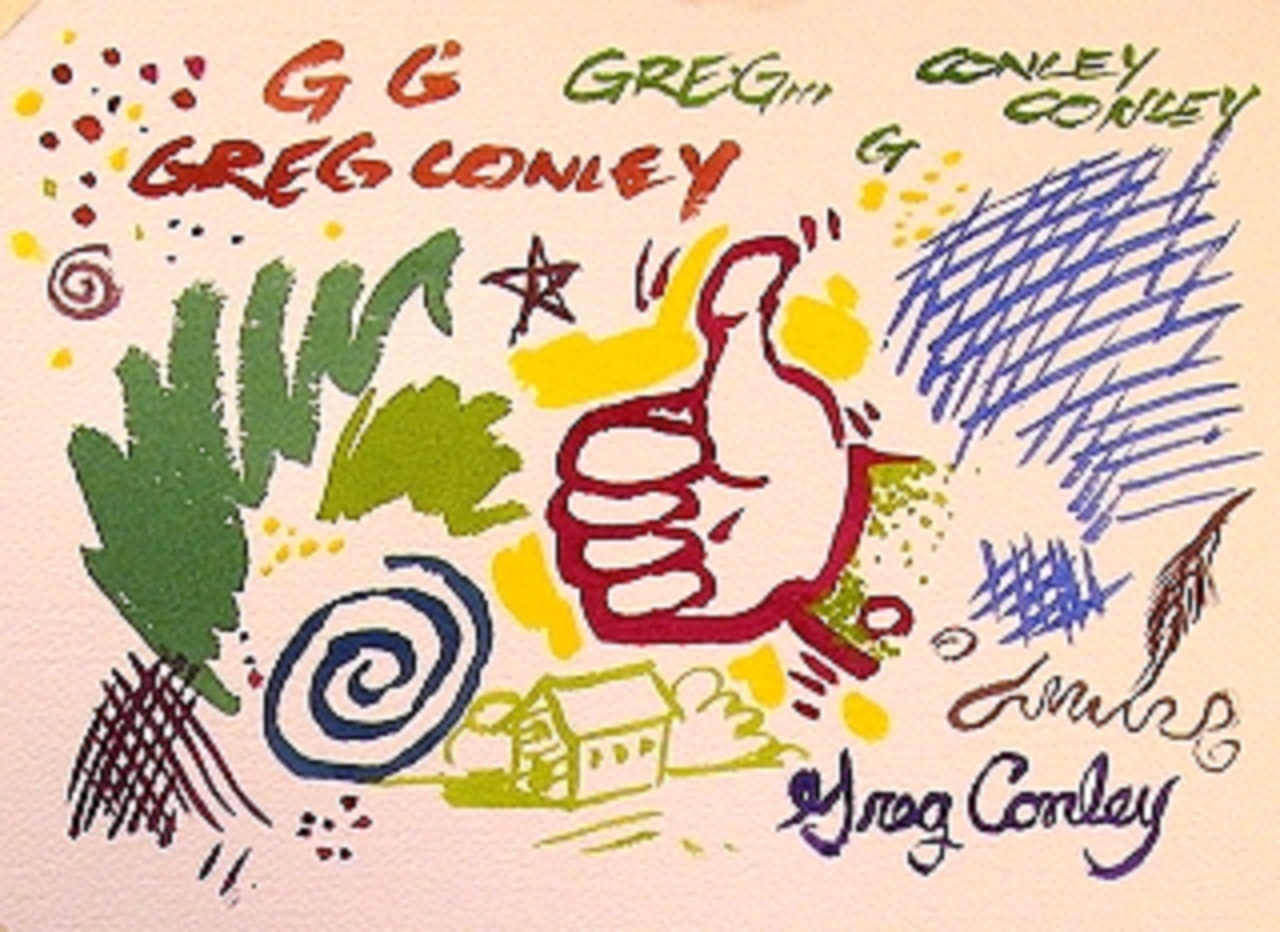 Your control for the Classic grip starts from the simple actions of the arms and wrist to the fine control of the fingers. With the control of the brush tip at hand (ha), try drawing a simple picture or two like the old masters' ink cartoons. Crosshatching, creating value with thin overlapping strokes, is best handled using the fine control this grip offers. Pointillism, the dot by dot laying in of color or texture can be easily done holding your brush this way.
Your control for the Classic grip starts from the simple actions of the arms and wrist to the fine control of the fingers. With the control of the brush tip at hand (ha), try drawing a simple picture or two like the old masters' ink cartoons. Crosshatching, creating value with thin overlapping strokes, is best handled using the fine control this grip offers. Pointillism, the dot by dot laying in of color or texture can be easily done holding your brush this way. 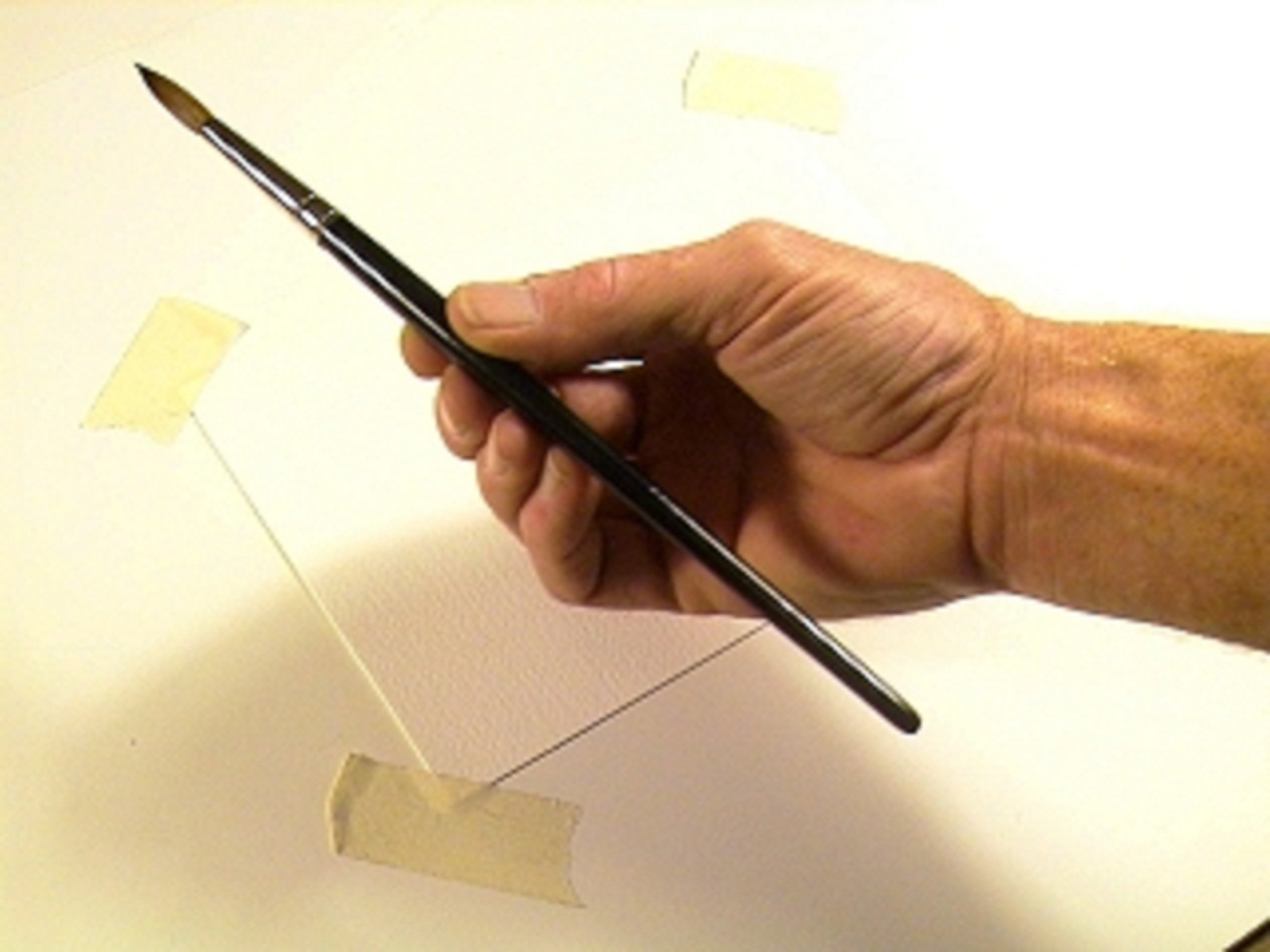
The Pinch
Hold your brush like you are picking up a pencil from a table, pinching it between your thumb and fingers. We'll call this grip the Pinch because you are using a pinching action to pick up your brush. As you run through this exercise you can loosen the grip to allow the brush some travel, but only use your fingertips to hold the brush when painting. You can use 2 to 4 fingertips to hold your brush. I found 3 worked best for me. 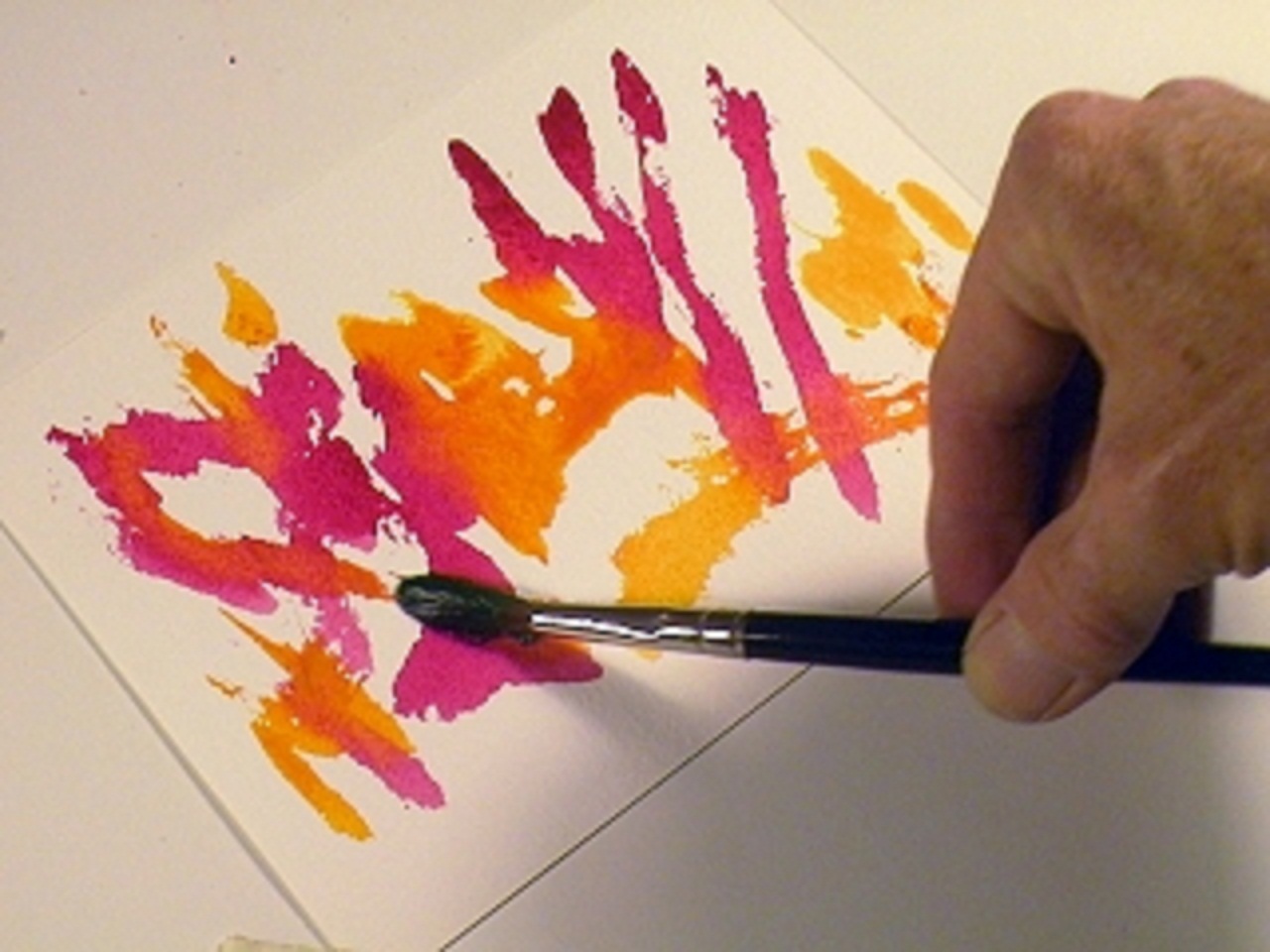 Pre-mix some puddles of colors on your palette and prepare to play. And I mean that in the best sense. Position your brush parallel with your paper, loosen your wrist and start seeing what strokes you can make as you hover over the paper. You won't have much control, but in some artistic situations that may be exactly what you need. Notice the brush's resistance to upward, pushed strokes and the ease of pulling strokes toward you, or downward.
Pre-mix some puddles of colors on your palette and prepare to play. And I mean that in the best sense. Position your brush parallel with your paper, loosen your wrist and start seeing what strokes you can make as you hover over the paper. You won't have much control, but in some artistic situations that may be exactly what you need. Notice the brush's resistance to upward, pushed strokes and the ease of pulling strokes toward you, or downward. 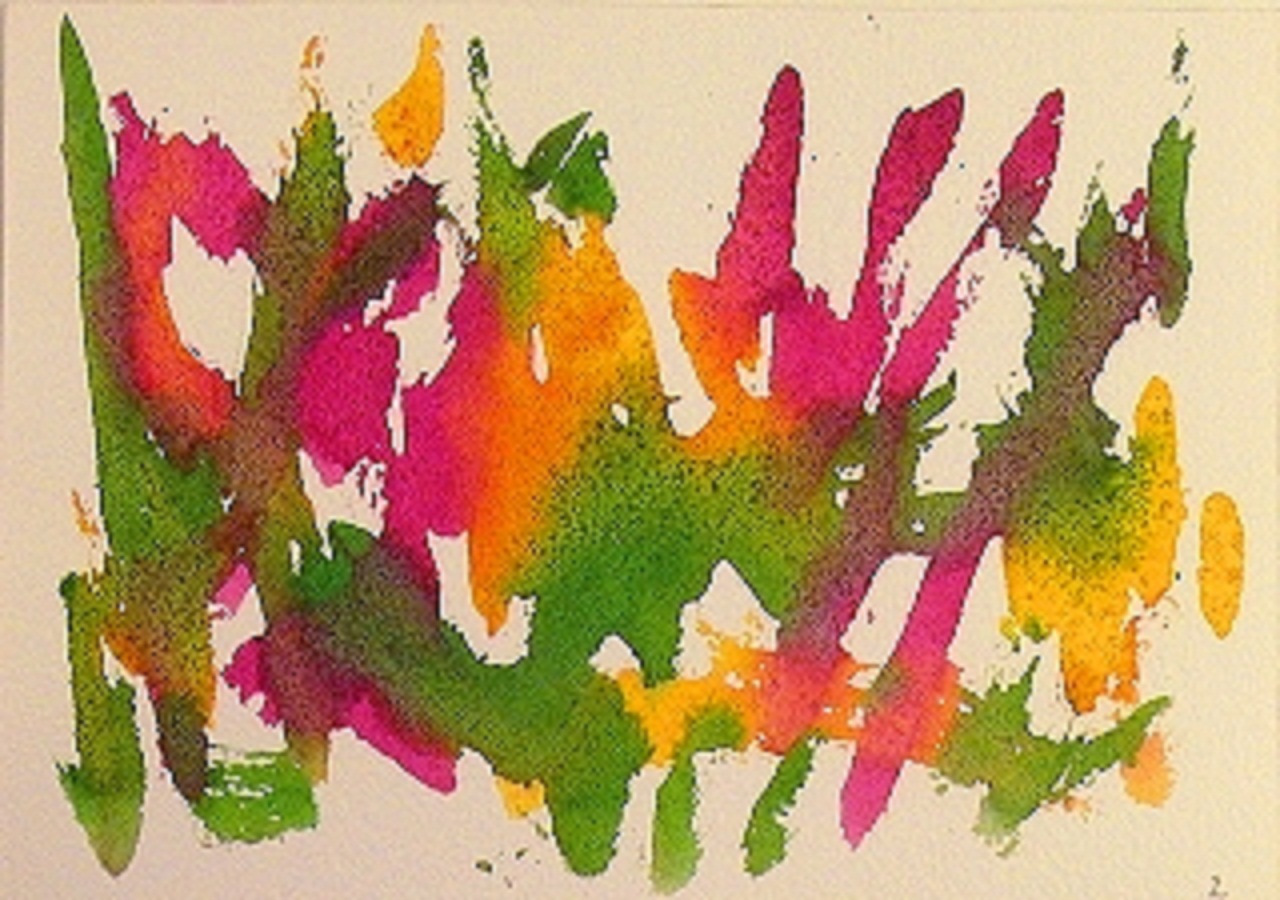 Most of the control is in your arm, wrist, and fingertips. Vertical strokes are easiest to pull but erratic to control in width. The wash of the stroke may be broken because you cannot apply the same pressure to the brush as you can with other grips. This same lack of pressure gives a unique texture when you move the brush side to side across your paper. Note that the arc of your horizontal strokes is controlled almost entirely by your arm.
Most of the control is in your arm, wrist, and fingertips. Vertical strokes are easiest to pull but erratic to control in width. The wash of the stroke may be broken because you cannot apply the same pressure to the brush as you can with other grips. This same lack of pressure gives a unique texture when you move the brush side to side across your paper. Note that the arc of your horizontal strokes is controlled almost entirely by your arm. 
Pass the pencil
Hold your brush like you are passing someone a pencil or the non-business end of a pair of scissors as in "here ya go..." But keep the brush in your hand, you'll need it. This is a looser grip than the Pinch with pressure from your thumb holding the body of the brush against your index and middle finger. Your ring finger and pinkie will wrap loosely and sort of serve as rudders. Held loosely, the brush gives you more control in getting your intent on paper. 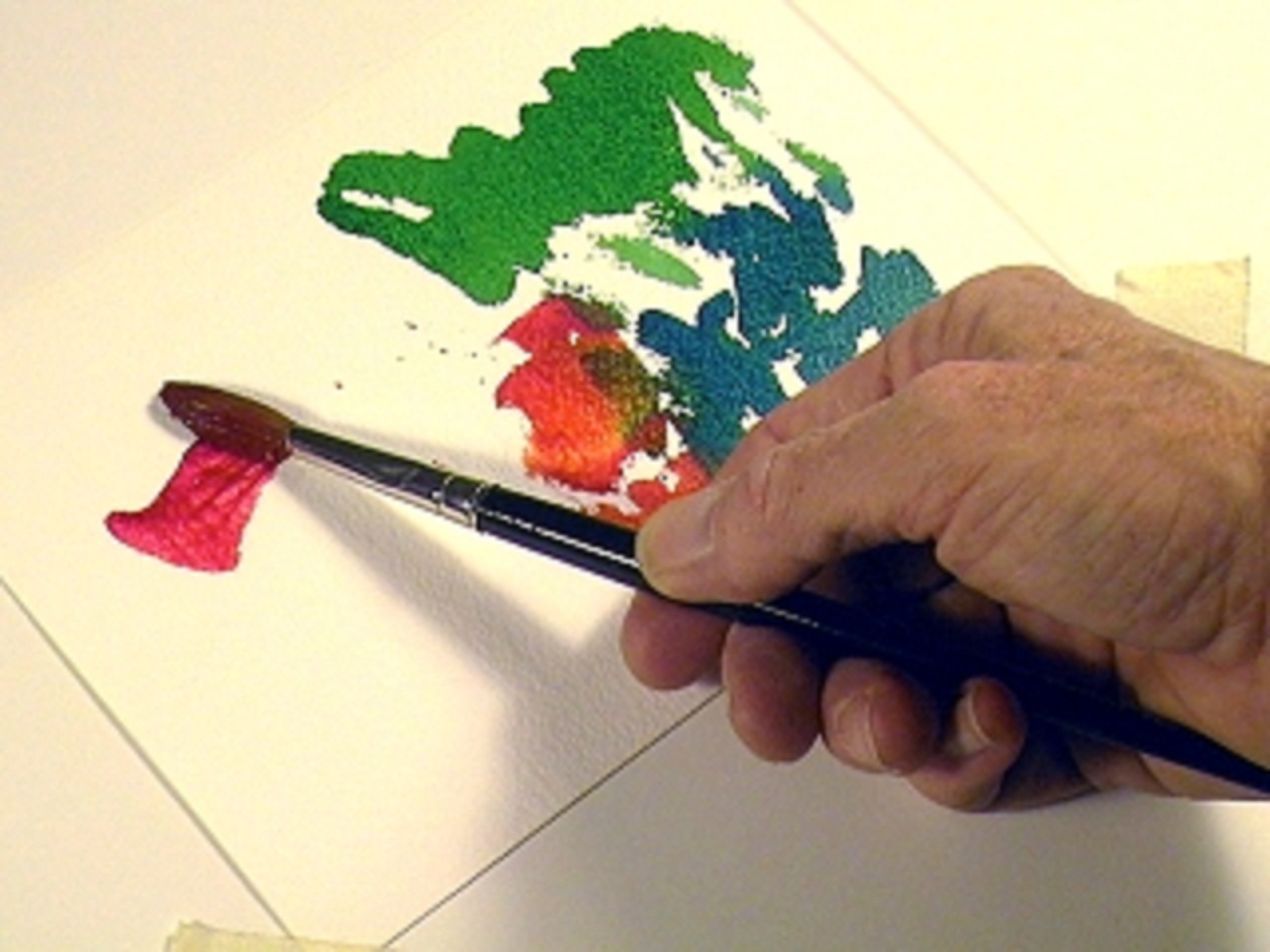 Rest your knuckles on your paper and using wrist motion scrape the edge of your brush against the paper. Alter your brush position and the angle of your wrist as you try different strokes. Try to paint some detailed or linear stokes with this grip. (Good luck) Rolling your brush between your thumb and fingers as you paint makes for interesting textural effects.
Rest your knuckles on your paper and using wrist motion scrape the edge of your brush against the paper. Alter your brush position and the angle of your wrist as you try different strokes. Try to paint some detailed or linear stokes with this grip. (Good luck) Rolling your brush between your thumb and fingers as you paint makes for interesting textural effects. 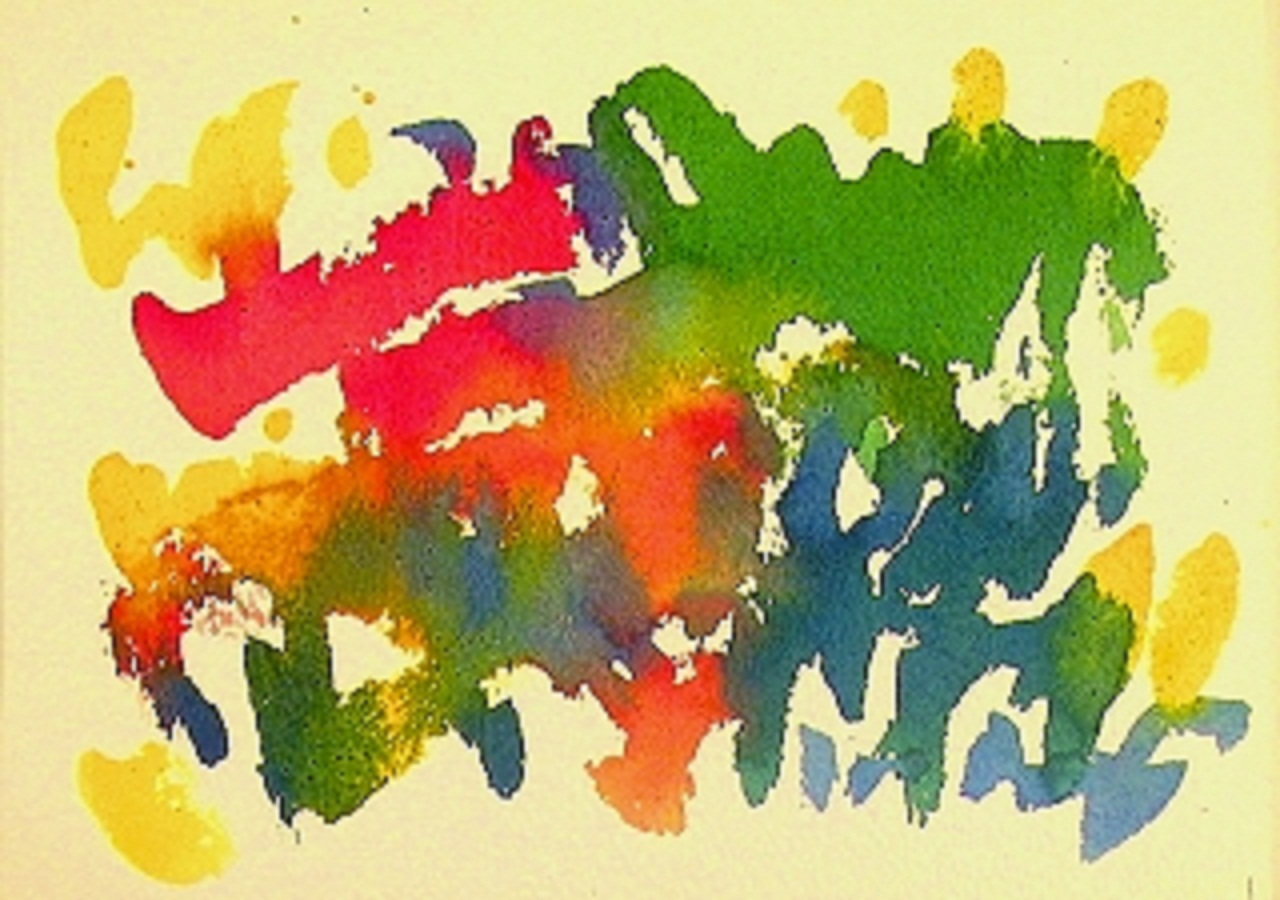 Most of the fine control in this grip in in your fingertips and wrist. You have more control that the Pinch grip. Just in a different way. If you feel up to exploring a little impressionism, this brush grip would be one to keep in mind.
Most of the fine control in this grip in in your fingertips and wrist. You have more control that the Pinch grip. Just in a different way. If you feel up to exploring a little impressionism, this brush grip would be one to keep in mind. 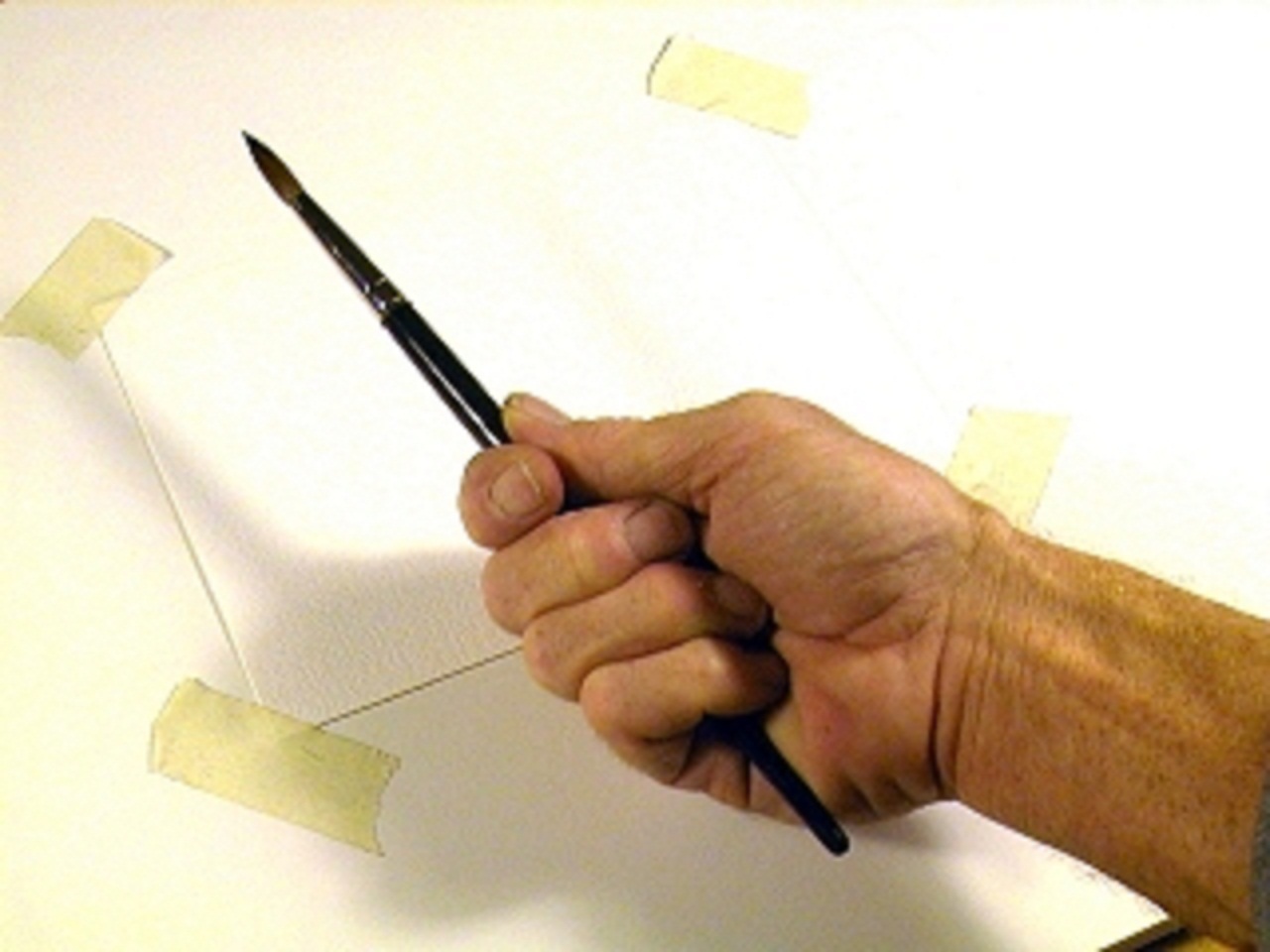
The Screwdriver
Hold your brush like a screwdriver. It's an awkward way to hold a brush at first, especially for painting watercolors. I've used this grip in acrylic paintings and oil paintings. Its use in watercolor can serve several purposes. First, the limited range of control forces simplicity. Secondly, holding your watercolor brush in this manner gives access to broad "sketching" or "painterly" strokes. Thirdly, if your fingers shake or you have arthritis, you might consider altering your style by altering the way you work your tools. 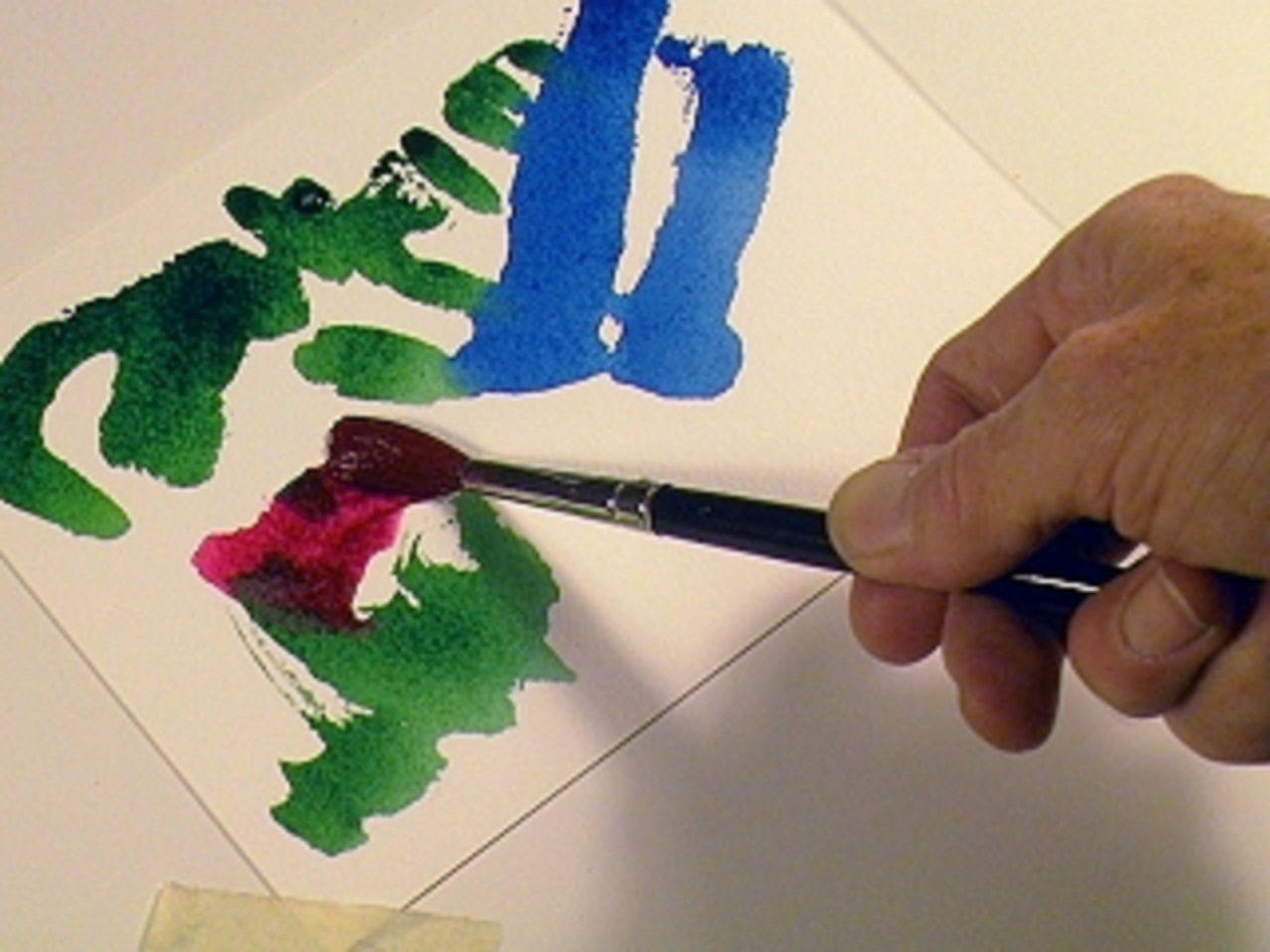 Instead of a "controlled" approach to painting with the Classic grip, the Screwdriver grip forces a different "attack" of paint to paper. I would call it an organic and expressive way to paint. Notice the tight grip of the ring and pinkie finger, as well as the other digits. Roll your wrist while you let the side of the brush roll across the paper for some interesting texture. Useful for blocking in large, loose masses of paint in your paintings. Or as a complete technique in itself.
Instead of a "controlled" approach to painting with the Classic grip, the Screwdriver grip forces a different "attack" of paint to paper. I would call it an organic and expressive way to paint. Notice the tight grip of the ring and pinkie finger, as well as the other digits. Roll your wrist while you let the side of the brush roll across the paper for some interesting texture. Useful for blocking in large, loose masses of paint in your paintings. Or as a complete technique in itself. 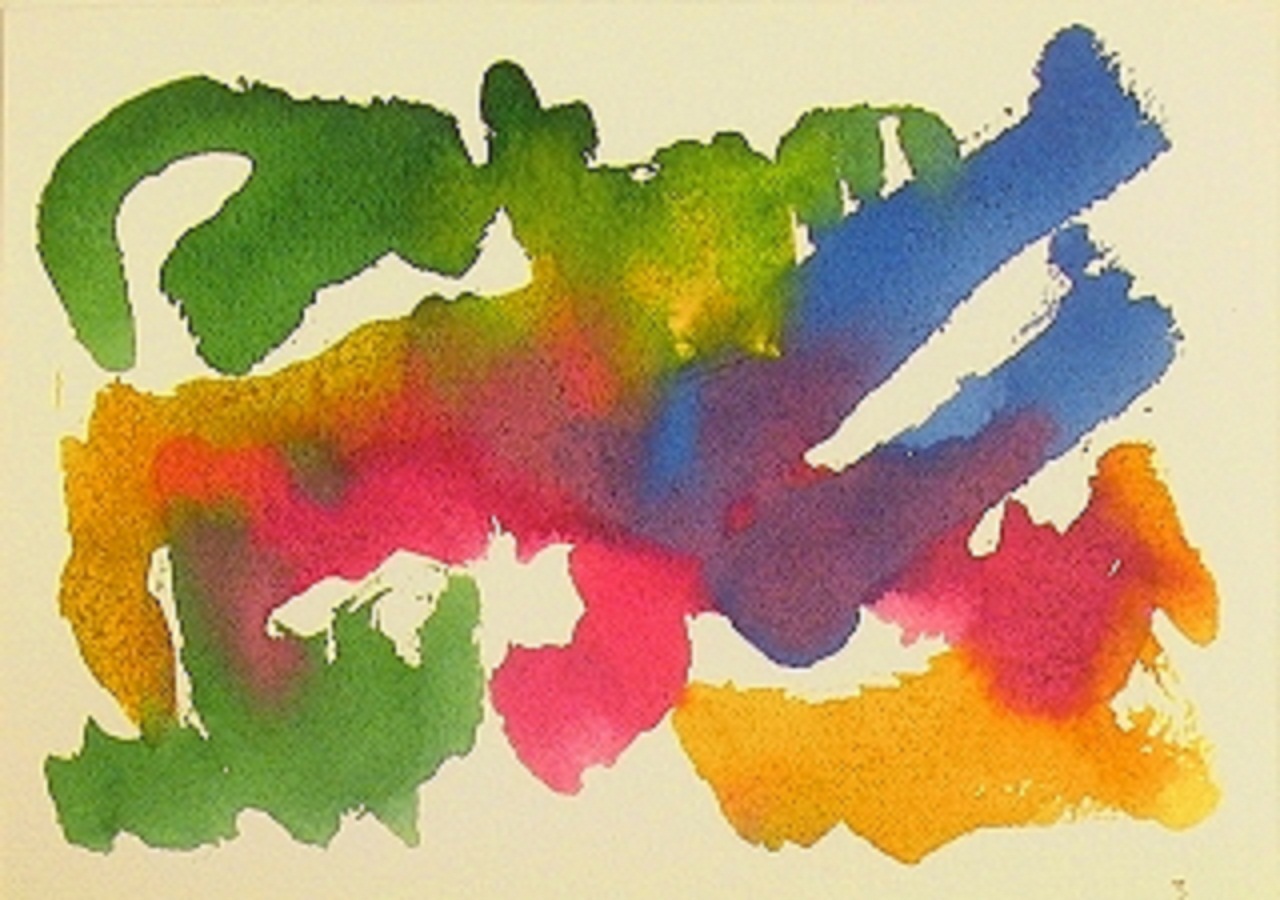 The motor control for this grip is shifted to your whole arm and is therefore limited. Your fingers are busy gripping the brush, so they act with the wrist. You'll be suprised by how much control you DO have and the action of painting while holding your brush this way is as aggressively artistic as it gets. Useful for quick expressive watercolor sketching en plein air or studio. Slapping and daubbing paint, and making grand curves are fun to do with this grip. Try it with a large flat watercolor brush.
The motor control for this grip is shifted to your whole arm and is therefore limited. Your fingers are busy gripping the brush, so they act with the wrist. You'll be suprised by how much control you DO have and the action of painting while holding your brush this way is as aggressively artistic as it gets. Useful for quick expressive watercolor sketching en plein air or studio. Slapping and daubbing paint, and making grand curves are fun to do with this grip. Try it with a large flat watercolor brush. 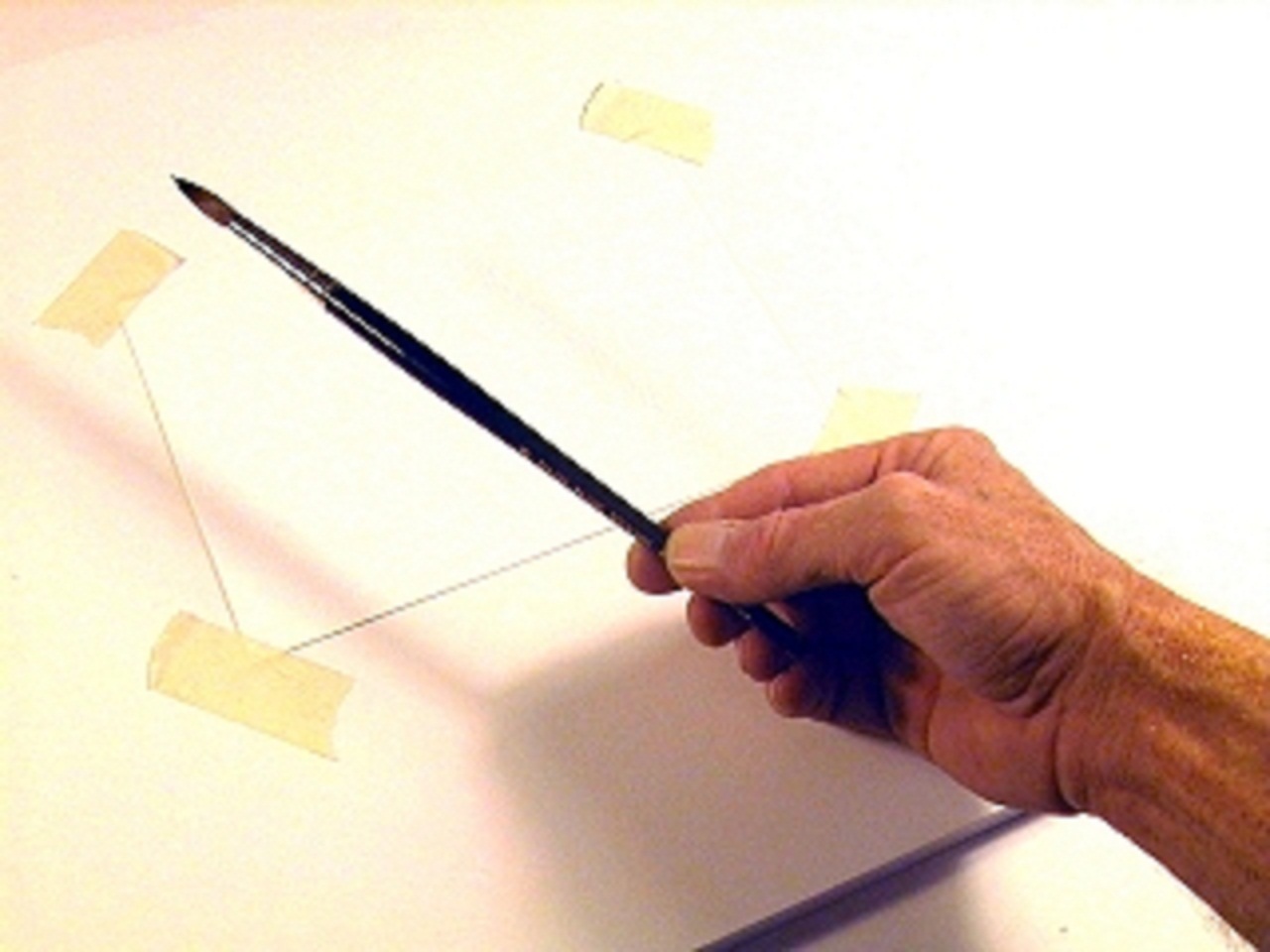
The Conductor
Grip your brush by the tip of the taper of the brush handle, like you're a conductor about to tap the music stand to make the orchestra come to attention. Using the weight of the brush and the new "feel" explore the looseness and painterly aspects of your brush. You'll notice this is a variation of the Pass the Pencil grip, using a loose grip so finger manipulation is possible. 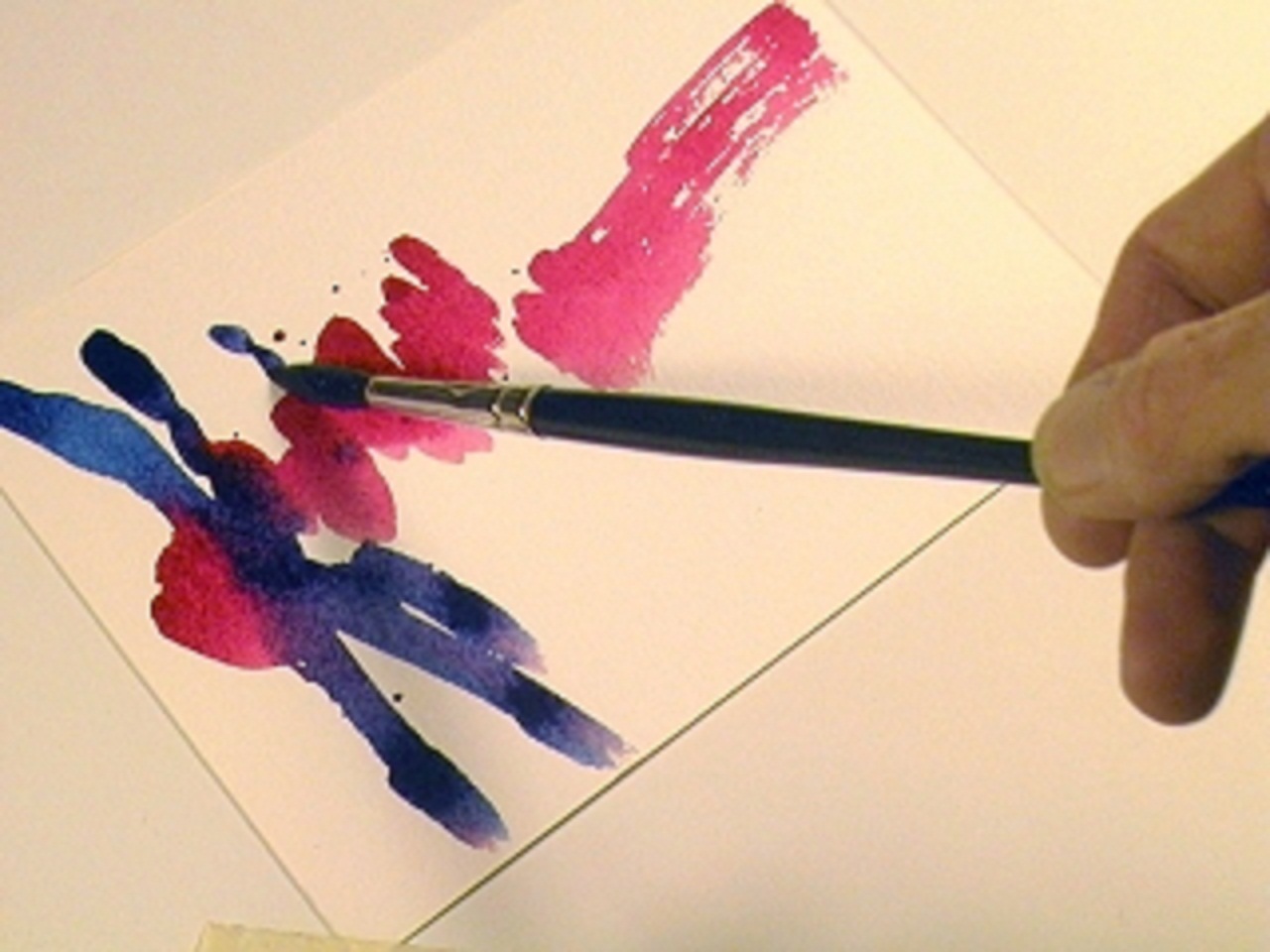 The variation of paint stroke quality in this grip is more a distortion of the brush end being further away from your fingers, and the balance of the weight of the brush in your fingertips. This is another very interactive technique. You have to actively watch the way your brush is moving across the paper. While you are interacting with your brush, your brush will often interact back. You have to learn the feel of the snap of the brush head as paint is whipping around when you paint, grasshopper.
The variation of paint stroke quality in this grip is more a distortion of the brush end being further away from your fingers, and the balance of the weight of the brush in your fingertips. This is another very interactive technique. You have to actively watch the way your brush is moving across the paper. While you are interacting with your brush, your brush will often interact back. You have to learn the feel of the snap of the brush head as paint is whipping around when you paint, grasshopper. 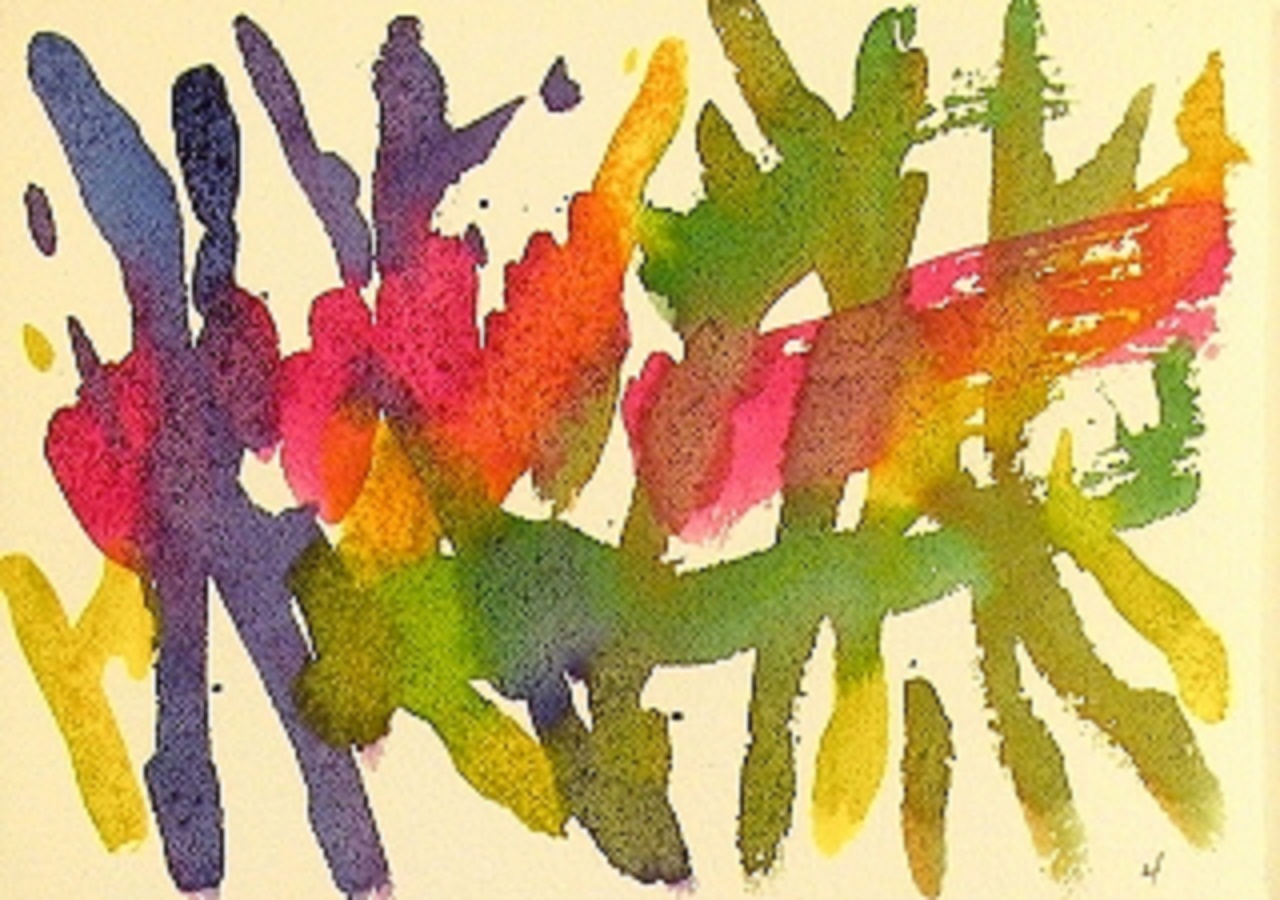 Using this grip your whole arm down to your fingertips is involved in a balancing act with a wobbly brush than often has a mind of it's own. Fluid yet thoughtful work is possible, letting you explore paint and form in a loose manner. A good technique for watercolor sketching outdoors when working in fleeting conditions. It's also just plain fun to paint this way sometimes, it's great for exploring ideas.
Using this grip your whole arm down to your fingertips is involved in a balancing act with a wobbly brush than often has a mind of it's own. Fluid yet thoughtful work is possible, letting you explore paint and form in a loose manner. A good technique for watercolor sketching outdoors when working in fleeting conditions. It's also just plain fun to paint this way sometimes, it's great for exploring ideas. 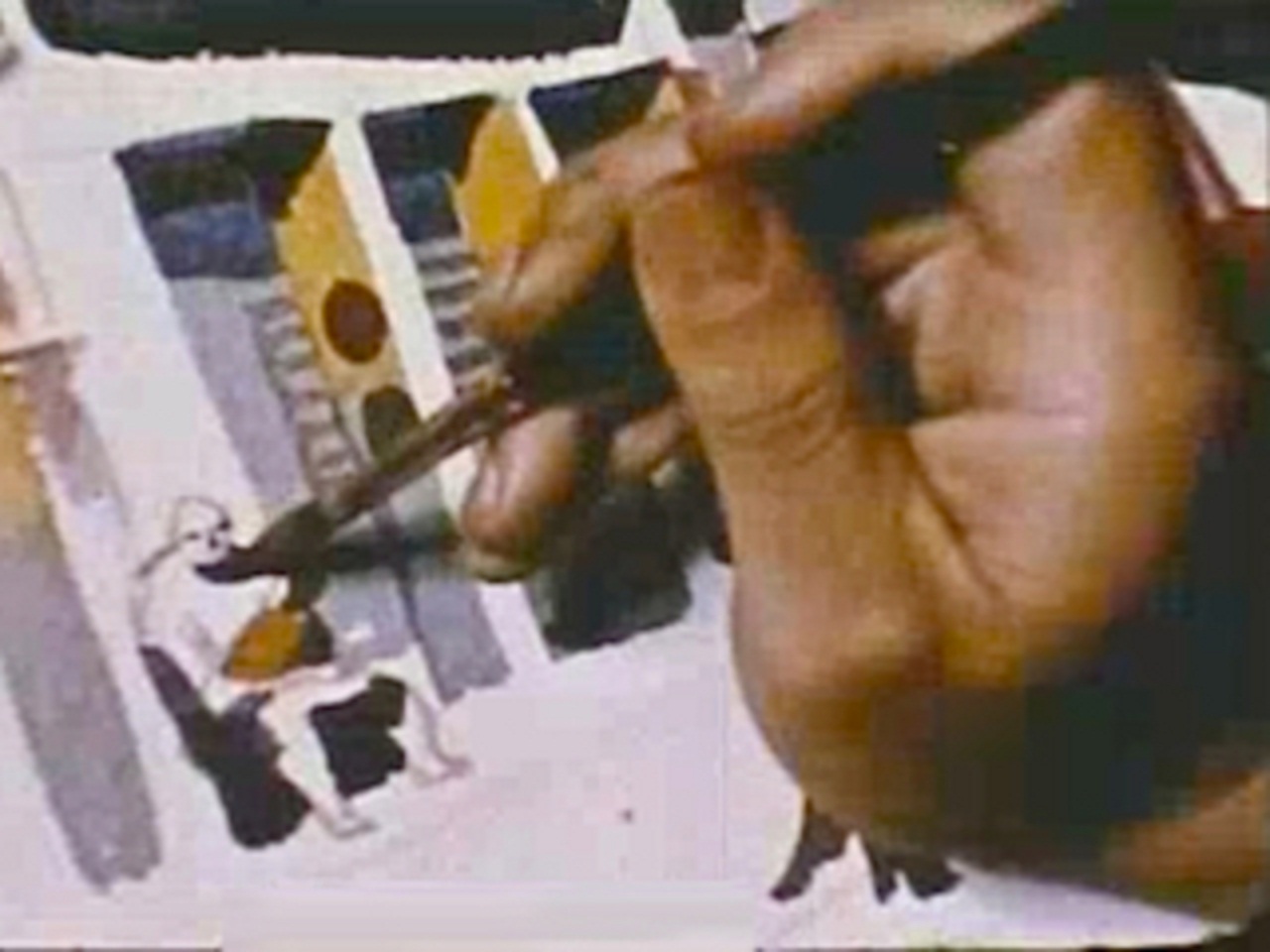
The Sumi-e (Kingman)
While researching the life of Dong Kingman I noticed a variation in his brush grip peculiar to those trained in Chinese calligraphy and sumi-e style painting. The original Chinese writing system was in the form of pictograms, tiny little abbreviated images of people and things called the hànzi characters. They are composed of thick and thin stylized lines that a brush makes. (To learn about sumi-e painting start here.) Western cultures have long depended on pens and pencils for handwriting and drawing, but the handwriting of many eastern cultures is based on the brush and ink. 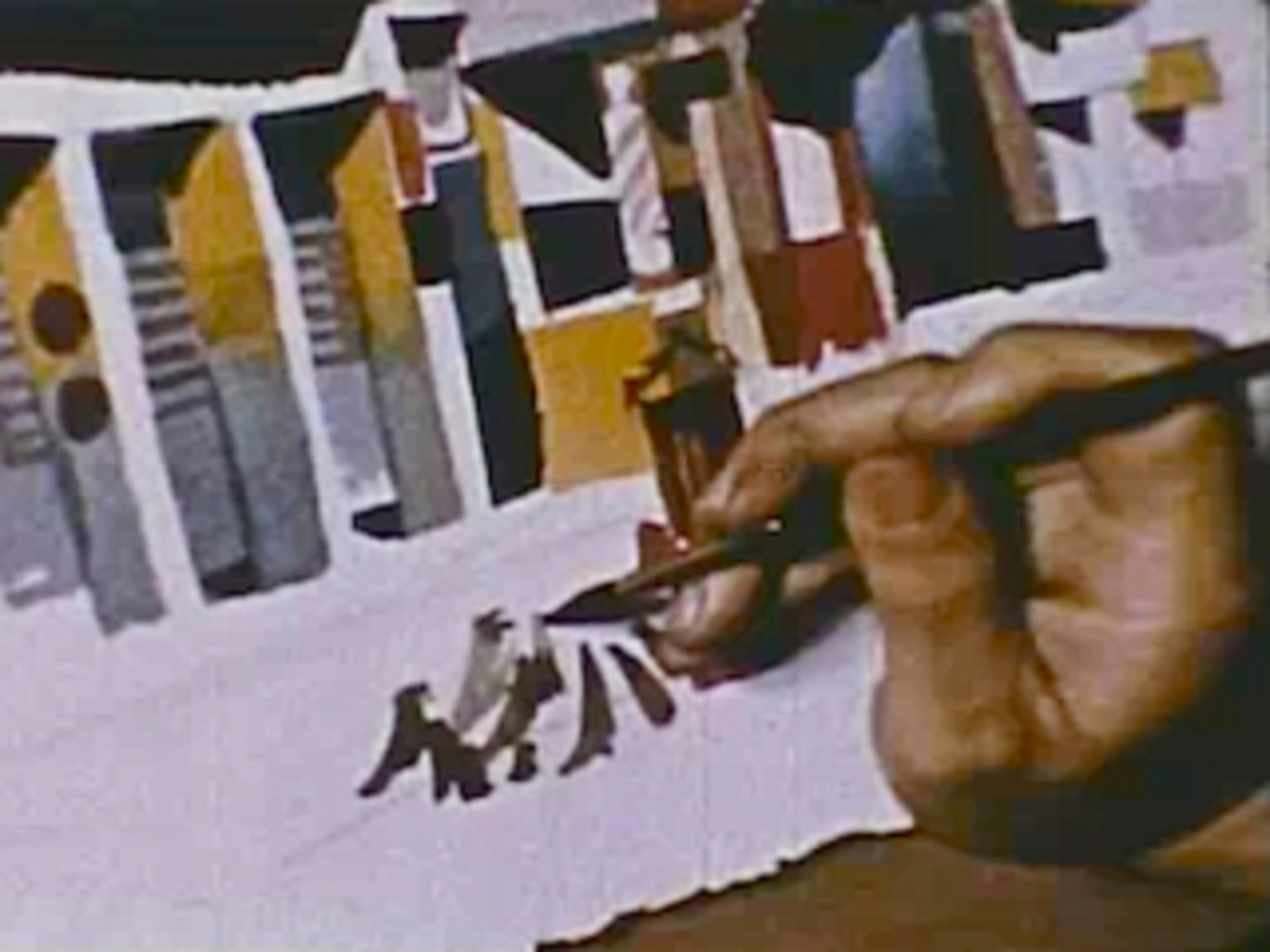 A stick with a singular point, i.e. a pencil or pen, requires you to apply pressure as you write and so demands a strong grip, so when we grab a brush we invariably go for the "Classic" grip. Just like we were getting ready to draw. In fact, early European watercolors were called watercolor drawings with washes tinting a drawing base. The classic grip works fine for the most part but it also requires more effort and has less range of motion and expression than the sumi-e lock. By shifting your brush position from the top of your index finger to the bottom of your index finger (see example) your grip becomes less severe, allowing controlled fluid movement.
A stick with a singular point, i.e. a pencil or pen, requires you to apply pressure as you write and so demands a strong grip, so when we grab a brush we invariably go for the "Classic" grip. Just like we were getting ready to draw. In fact, early European watercolors were called watercolor drawings with washes tinting a drawing base. The classic grip works fine for the most part but it also requires more effort and has less range of motion and expression than the sumi-e lock. By shifting your brush position from the top of your index finger to the bottom of your index finger (see example) your grip becomes less severe, allowing controlled fluid movement. 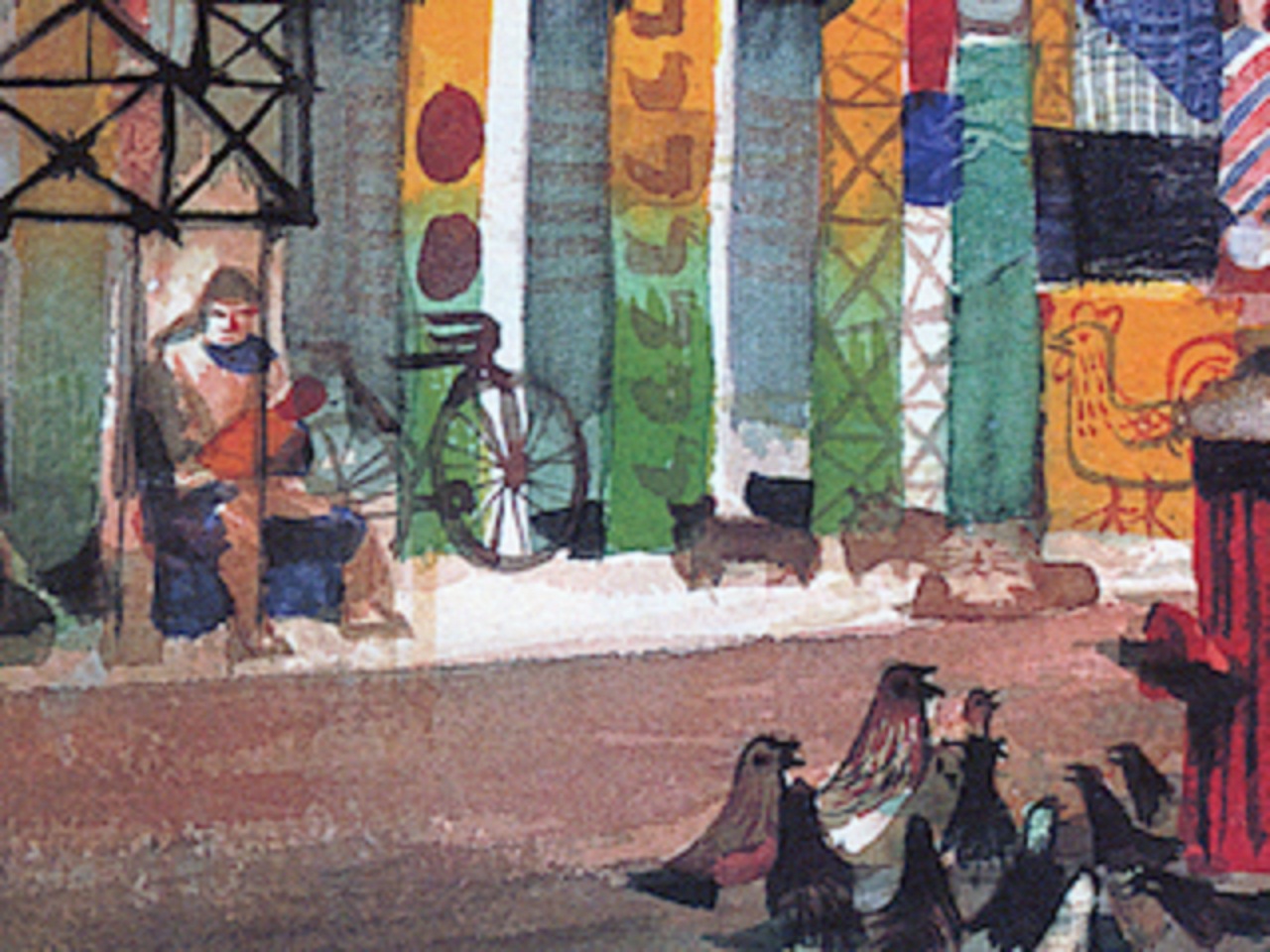 I noticed Mr. Kingman often held his brush this way when "writing" his figures, birds and other expressive details in his famous works. The 1954 James Wong Howe film Dong Kingman has many scenes of the artist at work en plein air as well as working at home in his studio. Try this grip when painting small areas and details like figures, birds, or architectural elements in your painting. You will get more range of movement and "snap" to your brushwork.
I noticed Mr. Kingman often held his brush this way when "writing" his figures, birds and other expressive details in his famous works. The 1954 James Wong Howe film Dong Kingman has many scenes of the artist at work en plein air as well as working at home in his studio. Try this grip when painting small areas and details like figures, birds, or architectural elements in your painting. You will get more range of movement and "snap" to your brushwork.



